Battle Rope Exercises And Workouts To Get You Ripped
Get to grips with battle ropes for the fat-burning and muscle-building benefits of weight training, as well as improved cardio fitness
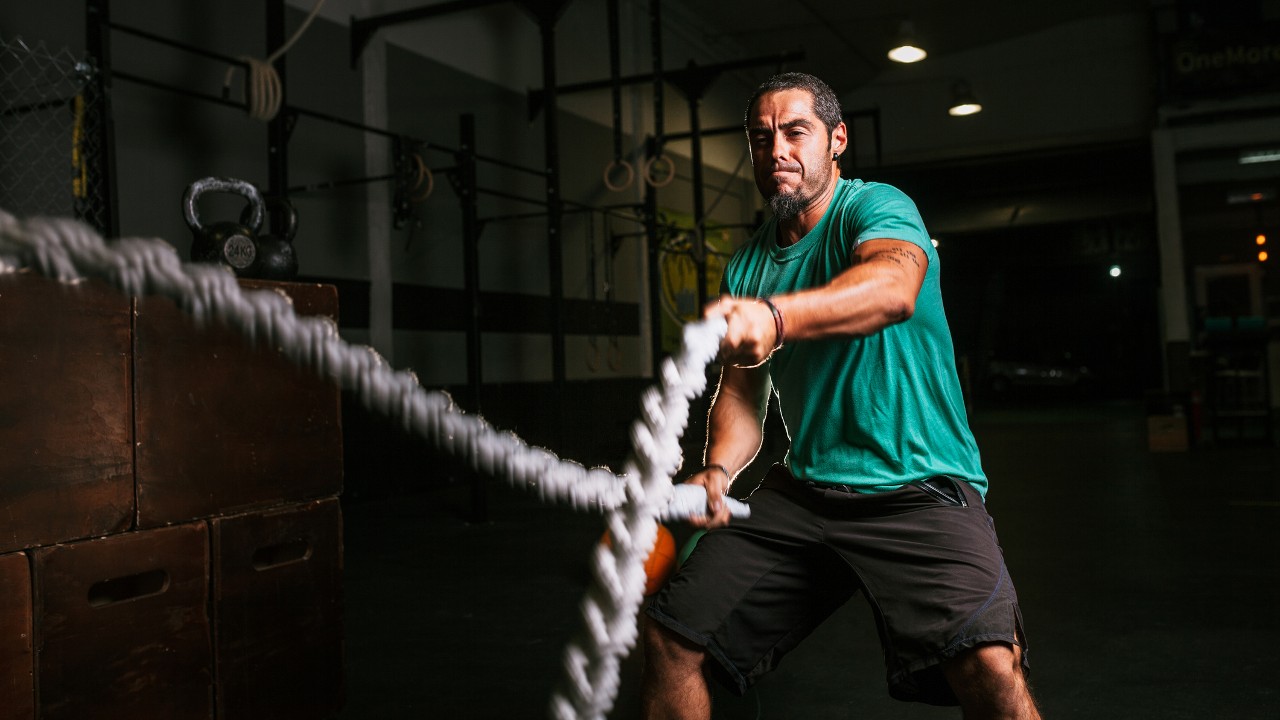
Battle ropes are no passing fad. They’ve been around since the mid-noughties and interest has steadily increased to the point where nearly all gyms have a set. And there’s a good reason for such widespread adoption. Throwing these thick, heavy ropes about does more than look impressive – it’s a ruthlessly effective workout.
Along with increased strength and fat loss, battle ropes provide an intense cardio workout – they’re well-suited to Tabata training – and develop muscular endurance. What’s not to love?
It’s also an easy-to-acquire piece of kit which is simple to set up outside and takes up minimal storage space. We’ve recommended four of the best battle ropes for you to choose from.
Use our guide to the key exercises, as well as workouts and session finishers from the experts, to reap the benefits for yourself.
How To Master Battle Ropes Wave
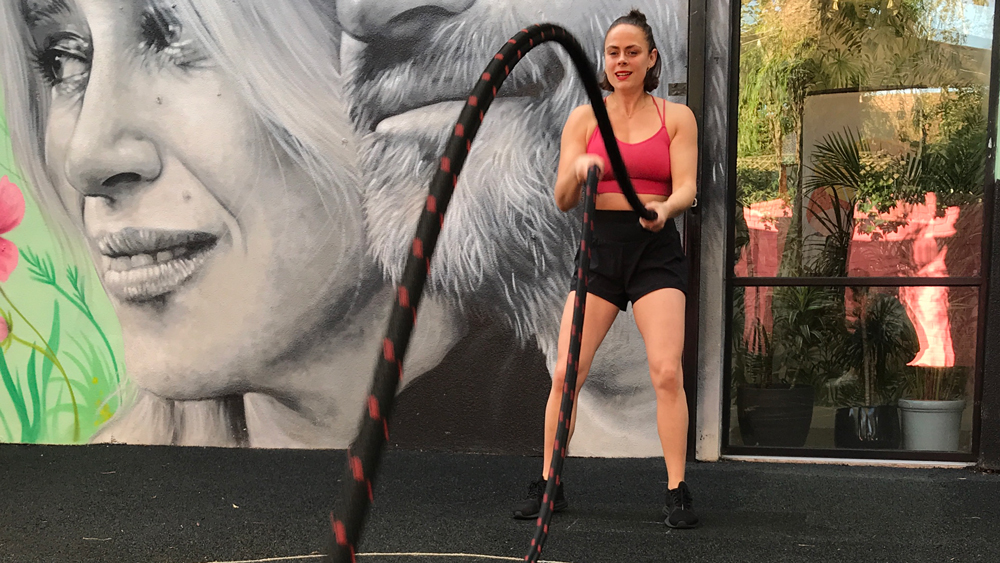
The wave is the quintessential battle ropes exercise – and it’s one that we think it’s fair to say that Rhian Cowburn, Strong + Bendy gym co-founder, has mastered. Cowburn performed battle ropes waves for an hour to take the female Guinness World Record while beating the men’s time, too. So who better to ask for advice on how to perform the move?
Get your grip right
“The ideal grip is the hand and fingers on the handle,” says Cowburn, “but with the thumb off the handle on the rope itself, with your hands facing each other. I find this allows you to flick the wrist in a way that isn’t possible when just holding the handle.
“I often see people holding the handle right at the end. This is a no-no, because it means you can’t flick the wrist. Also, if you’re working up to endurance sets your hands will get sweaty and the rope could end up slipping out of your hands.”
Get the Coach Newsletter
Sign up for workout ideas, training advice, reviews of the latest gear and more.
Set a solid stance
“Stand with your feet slightly wider than shoulder-width apart,” says Cowburn. “Don’t stand completely upright, but put a slight bend in your hips and knees while keeping your back straight and chest forwards.”
Flick, don’t tug
“Visualise throwing the ropes up and away by flicking your wrist quickly to raise and lower the ropes, alternating between your right and left hand,” says Cowburn. “A common error is tugging the ropes towards yourself, which doesn’t create a nice wave motion and can also cause shoulder injuries.”
Learn the ropes
“Make sure to choose rope of the right length and thickness,” says Cowburn. “Is the wave reaching all the way to the anchor point? Be honest. If not, perhaps your rope is too thick, too long, or both. When starting out, a nine-metre long, ⅕in-thick rope will definitely be enough to get a great workout in. Then you can progress up to 12m-plus ropes and if you want to really take it up a notch, increase the rope thickness to two inches.”
Breathe
''This sounds obvious,” says Cowburn, “but often the level of concentration needed means people hold their breath! Needless to say you won’t last very long on a workout that’s challenging both your strength and cardio fitness at the same time without making sure you’re taking long deep breaths.”
Don’t creep forwards
“The thing to watch out for during a long set is ending up closer to the anchor point than when you started,” says Cowburn. “You’ll hardly realise you’re doing it, but gradually you can end up creeping forwards, which puts too much slack in the ropes and makes it really hard to create a nice wave as well as keeping great form. Put a marker down in chalk or tape on the floor, and try to stand on or close to that point for the duration of your long set.”
5 Essential Battle Rope Exercises
“You can use ropes at the beginning of your session as part of a warm-up or activation phase,” says Charles Allan-Price from W10 Performance gym. “You can also use them in the middle of your workout to build intensity with waves, slams and whips, or you can use them at the end of a workout as a finisher for time or reps.”
“Ropes are great for time-based workouts,” says Allan-Price. “You work at a higher intensity than you do than with, say, dumbbells so you get your heart rate up as well to burn more calories.” Here are Allan-Price’s favorite battle rope exercises to add to your training repertoire.
1 Biceps wave
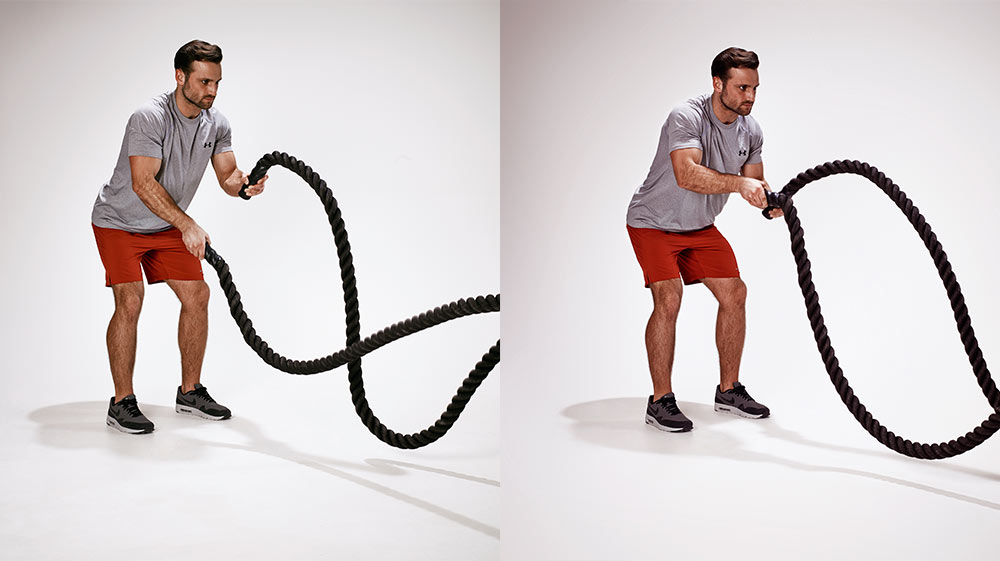
Keeping the rest of your body still, wave the ropes as fast as possible, focusing on high reps and high amplitude. It’ll prime your muscles for what’s to come.
“Stay in a quarter squat position, with your back straight, and keep elbow movement to a minimum,” says Allan-Price. “Keeping your elbows in will stop your shoulders from burning out and keep the movement in the biceps.”
2 Lateral whip
With a slight bend in your elbows, bring the ropes up as if you were doing a lateral raise, keeping your thumbs pointing slightly forwards. Then whip them downwards. Continue to do your raises at speed.
“This is a great way to target the rear delts and back muscles, which are muscles associated with creating better posture,” says Allan-Price. “Common errors include too much leg movement in and out of the squat, and letting the torso slouch. Keep your chest up and stay in a quarter squat position.”
3 Outside spiral
With alternate arms, make outward circles so that the rope moves like a corkscrew, working your shoulders and rotator cuffs.
“This exercises has a few variations for all levels of ability, from half kneeling to clockwise and anti-clockwise rotations,” says Allan-Price. “It will work the rotator cuffs, which are the small stabilising muscles of the shoulder joints, and create core tension – that’s why it is important to keep your torso as strong as possible by not allowing yourself to slouch. It’s a fun and dynamic way to train the back muscles and rotator cuffs.”
4 Lying T

Lie face down with your arms forming a T-shape, then move them up and down as if you’re preparing for lift-off. It’ll work your lower back and shoulders.
“Another great exercise to work the posture muscles, and a great activation drill when starting a battle rope workout,” says Allan-Price. “During this exercise you’re going to work the upper, middle and lower traps as well as the rear delts, and your shoulders will be burning after 30 seconds. It’s great to use either in warm-ups or as a main set exercise. Make sure you squeeze your glutes and don’t arch your lower back. You should mainly feel this through the upper back and the shoulders.”
5 Jumping slam
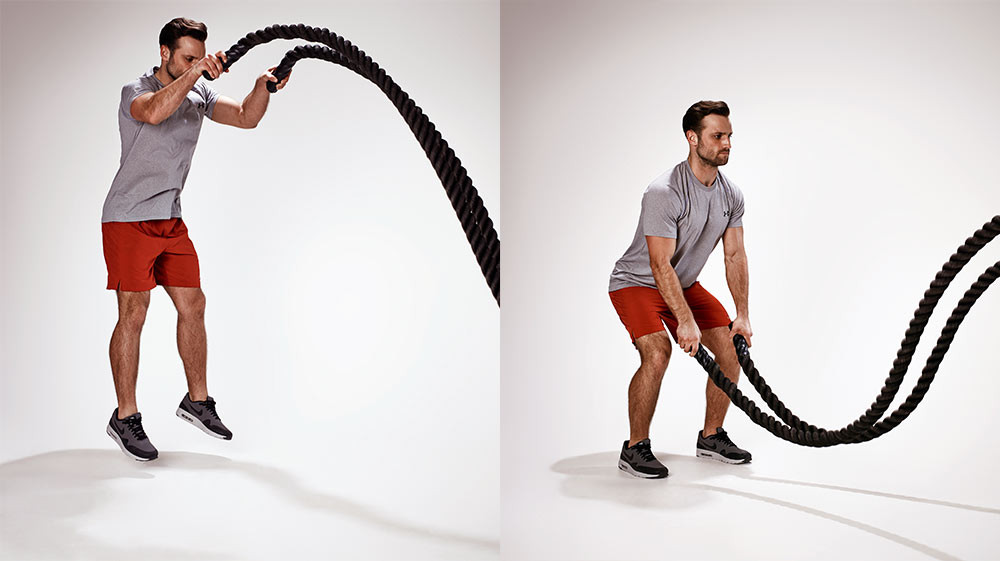
Battle Rope Exercises For Your Core
Full circle wave
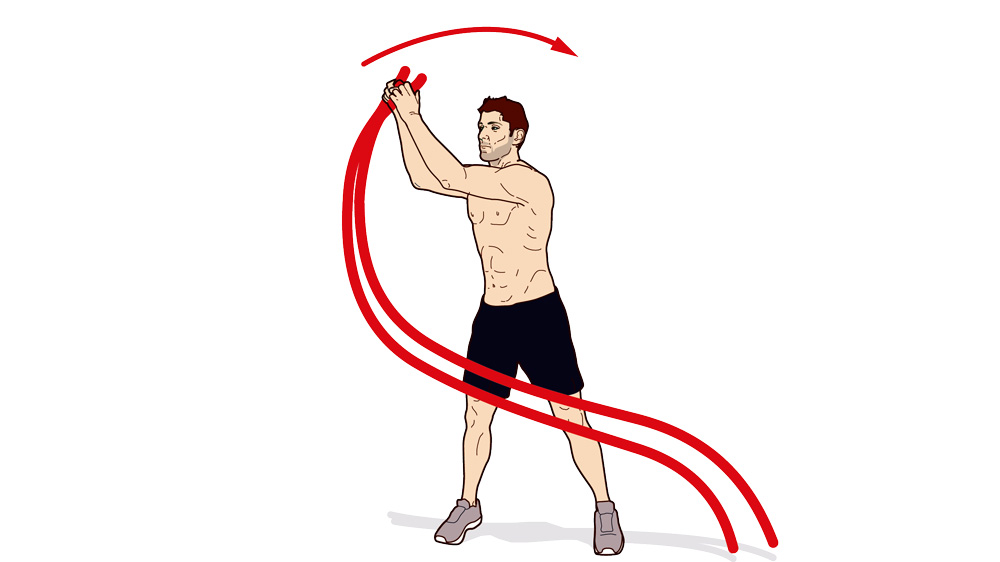
Stand tall, sideways on to where the rope ends are fixed, holding the other ends of the ropes in each hand with your hands together. Move your hands in a big circle clockwise in front of your body for 12 reps, then do 12 reps anti-clockwise. Turn around then repeat. Rest for 30 seconds and repeat three times.
Two-point wave
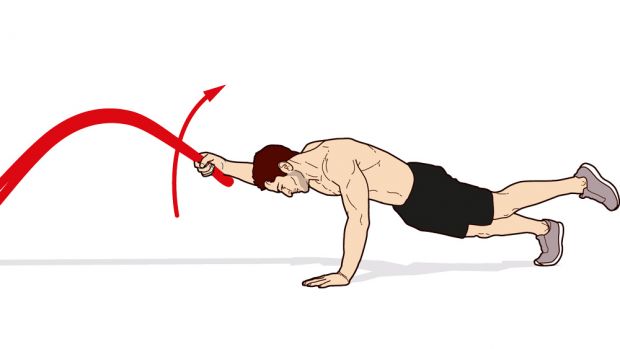
Start in the plank position with your abs fully engaged and your body straight. Hold the rope in your right hand and raise your left leg. Wave your right hand up and down, keeping the rest of your body stable, for 15 seconds, then switch sides and repeat. Rest for 30 seconds and repeat five times.
Side plank wave
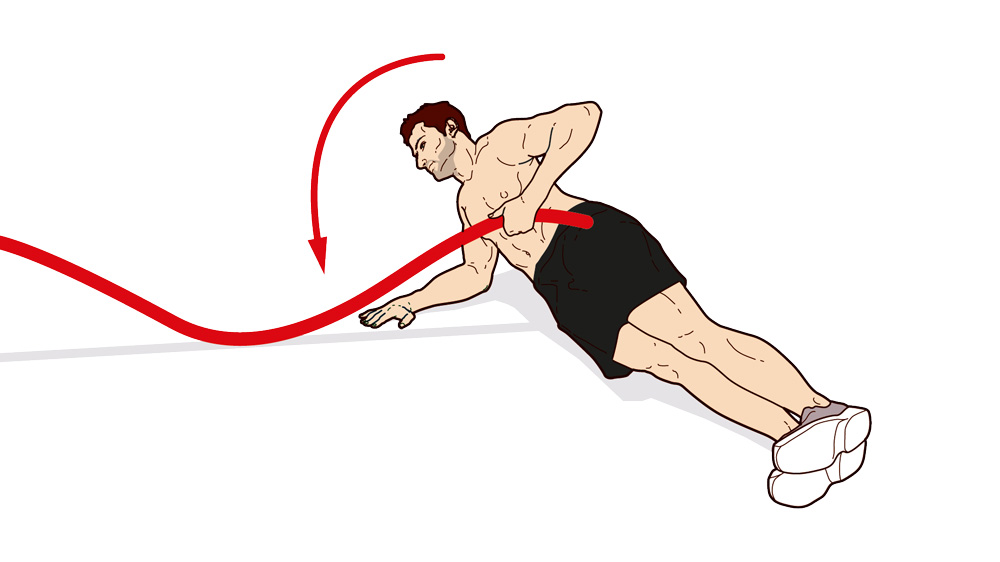
Start in a side plank with your legs straight and your upper body supported on your right forearm. Hold the rope in your left hand and wave it up and down for 15 seconds. Switch sides and repeat. Rest 30 seconds and repeat five times.
Upper-Body Battle Ropes Workout
”For any sport that demands upper-body conditioning, like rugby, MMA or CrossFit, ropes are a very useful tool because of the amount of conditioning you can get from them,” says top personal trainer Tom Eastham (@EasthamsFitness). “For maximum effect, focus on maintaining the intensity of the motion from start to finish, no matter how much it burns.”
In fact, if it’s upper-body conditioning you want, battle ropes are the best tool. “It’s hard to get it from anything else without serious fatigue,” says Eastham. “Sure, you can max out on press-ups and suspension rows, but you won’t be working for very long. The ropes will fatigue your cardiovascular system before your muscles give in.”
Do this three-move rope workout to whip your upper body into shape. Do move 1 for 40 seconds on, rest for 20 seconds, then do the same for moves 2 and 3. Do 12 rounds.
1 Alternating rope whips
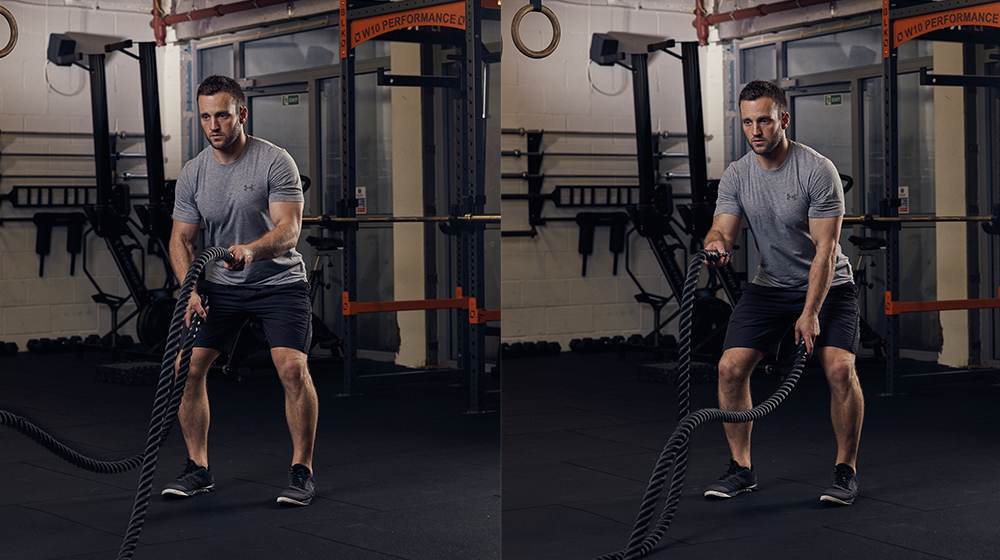
Stand upright with your feet hip-width apart, holding a battle rope in each hand. Begin to move the ropes up and down one at a time creating a wave movement through both ropes. Move the ropes quickly and smoothly, one at a time.
2 Wrestler throws
Grab the ropes in a reverse grip so the ends are pointing toward the ceiling. Whip the ropes up and over, rotating your whole body to the left. Then whip up and over and rotate your whole body to the right. Do as many reps as you can, always imagining you’re throwing the rope to the floor.
3 Lunge slam
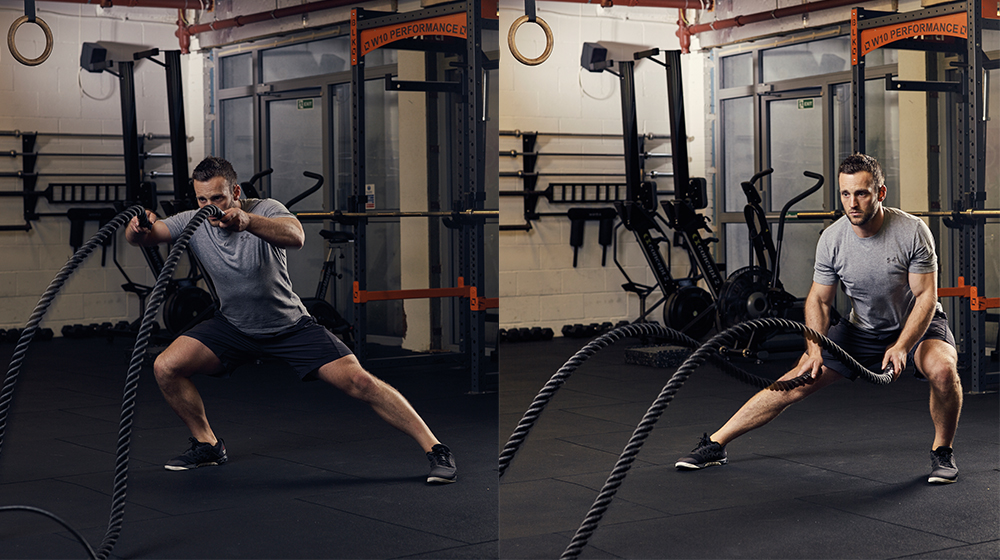
Holding a rope in each hand, raise your arms and slam the ropes down into the ground as hard as you can while lunging to one side. Repeat the move on alternate sides.
Battle Rope Finishers
Quickfire workout finishers for fast fat loss and upper-body conditioning.
Tabata rope whips
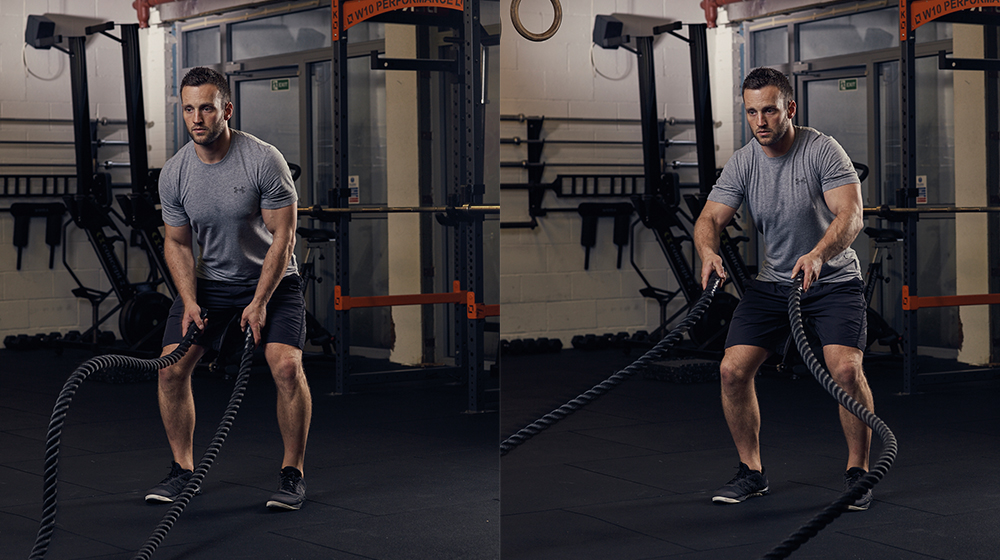
What Eight rounds of 20 seconds’ work and ten seconds’ rest of double rope whips.
Why “We are not looking for power here, just total rep count over four minutes,” says Eastham. “Grab a friend and ask them to count, then challenge them to beat your score. It’s all about intensity over volume – something CrossFit does very well. This challenge should bring your intensity towards the max.”
Burpee whips
What Alternate five double rope whips with one burpee. See how many burpees you can manage in 60 seconds.
Why “Any contact sport athlete needs the ability to get up from the floor quickly and often,” says Eastham. “With the rugby players I train, I test their max effort burpee score in 60 seconds. Add in some battle ropes and they are in a mess. A great test of your max power output.”
Muscular endurance test
What The exercise is simple. Alternating singe arm rope whips. Work for 30 seconds. Rest for 30 seconds.
Why The aim is to complete as many intervals as possible, keeping a steady pace and without dropping the rope. “This is as much a mental toughness test as it is a physical one,” says Eastham. “Be honest with yourself, and don’t drop the tempo of those whips.”
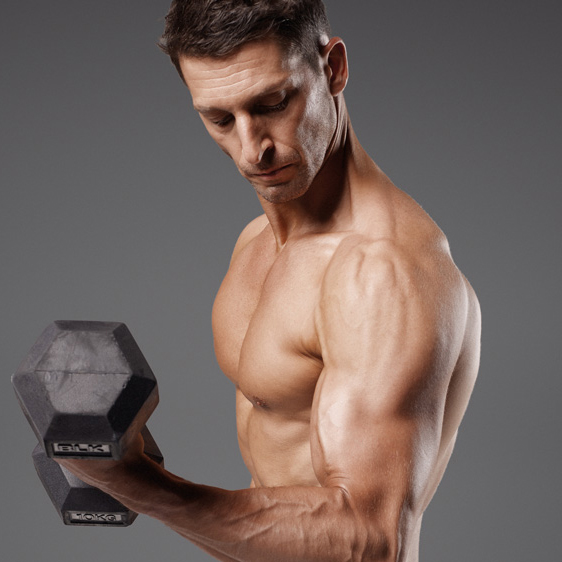
Joe Warner is a highly experienced journalist and editor who began working in fitness media in 2008. He has featured on the cover of Men’s Fitness UK twice and has co-authored Amazon best-sellers including 12-Week Body Plan. He was the editor of Men’s Fitness UK magazine between 2016 and 2019, when that title shared a website with Coach.
- Nick Harris-FrySenior writer
